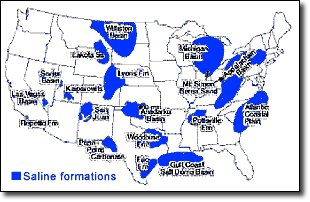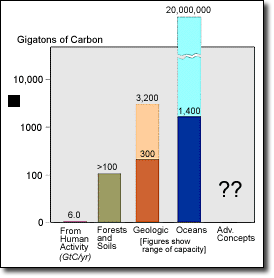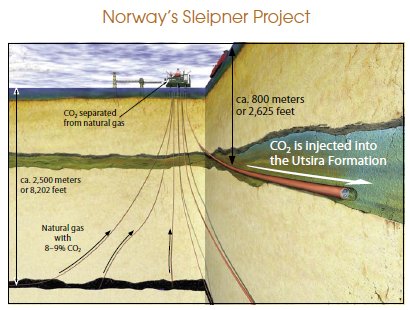Sequestration: Part 4 - In Brine Fields
 Source: NETLSalt, salt, everywhere but no French fries to eat!
Source: NETLSalt, salt, everywhere but no French fries to eat!"Saline Formations. Sequestration of CO2 in deep saline formations does not produce value-added by-products, but it has other advantages. First, the estimated carbon storage capacity of saline formations in the United States is large, making them a viable long-term solution. It has been estimated that deep saline formations in the United States could potentially store up to 500 billion tonnes of CO2.
Second, most existing large CO2 point sources are within easy access to a saline formation injection point, and therefore sequestration in saline formations is compatible with a strategy of transforming large portions of the existing U.S. energy and industrial assets to near-zero carbon emissions via low-cost carbon sequestration retrofits.
Assuring the environmental acceptability and safety of CO2 storage in saline formations is a key component of this program element. Determining that CO2 will not escape from formations and either migrate up to the earth’s surface or contaminate drinking water supplies is a key aspect of sequestration research. Although much work is needed to better understand and characterize sequestration of CO2 in deep saline formations, a significant baseline of information and experience exists. For example, as part of enhanced oil recovery operations, the oil industry routinely injects brines from the recovered oil into saline reservoirs, and the U.S. Environmental Protection Agency (EPA) has permitted some hazardous waste disposal sites that inject liquid wastes into deep saline formations.
The Norwegian oil company, Statoil, is injecting approximately one million tonnes per year of recovered CO2 into the Utsira Sand, a saline formation under the sea associated with the Sleipner West Heimdel gas reservoir. The amount being sequestered is equivalent to the output of a 150-megawatt coal-fired power plant. This is the first commercial CO2 geological sequestration facility in the world." They use CO2 extracted from a natural gas field to avoid paying the carbon tax on the CO2 emissions.
Text is from the fossil energy sequestration page of U.S. Department of Energy.
 Source: DOEThere are very large potential storage capacities for CO2 in the ocean, geologic formations and in the biosphere.
Source: DOEThere are very large potential storage capacities for CO2 in the ocean, geologic formations and in the biosphere.

